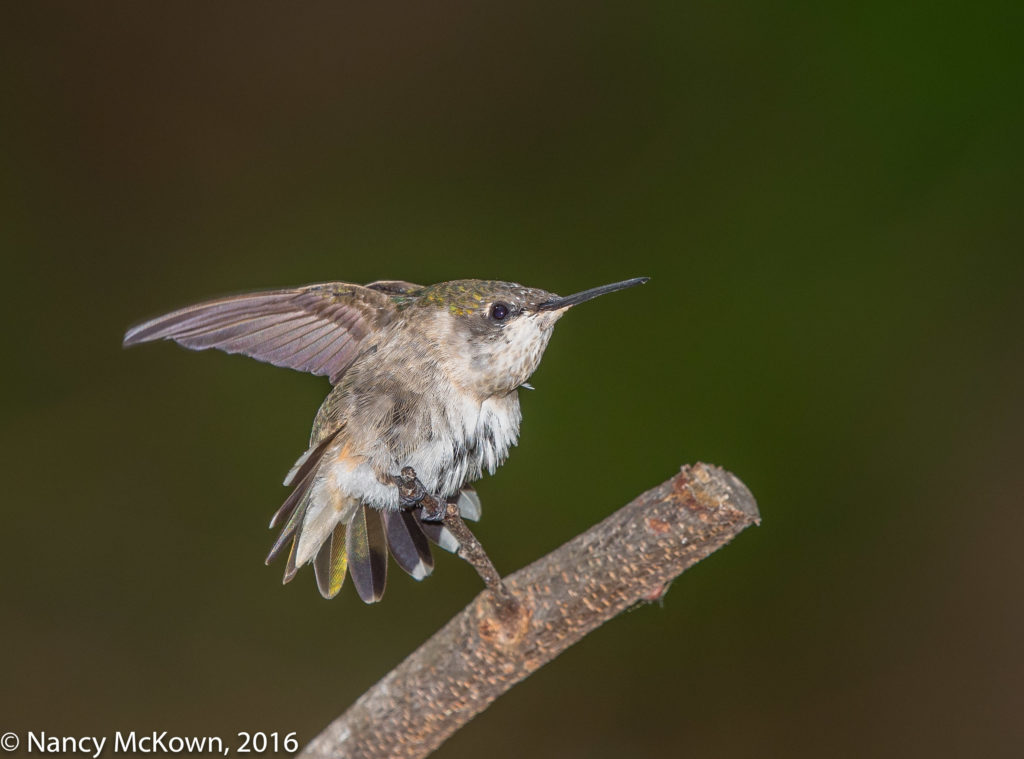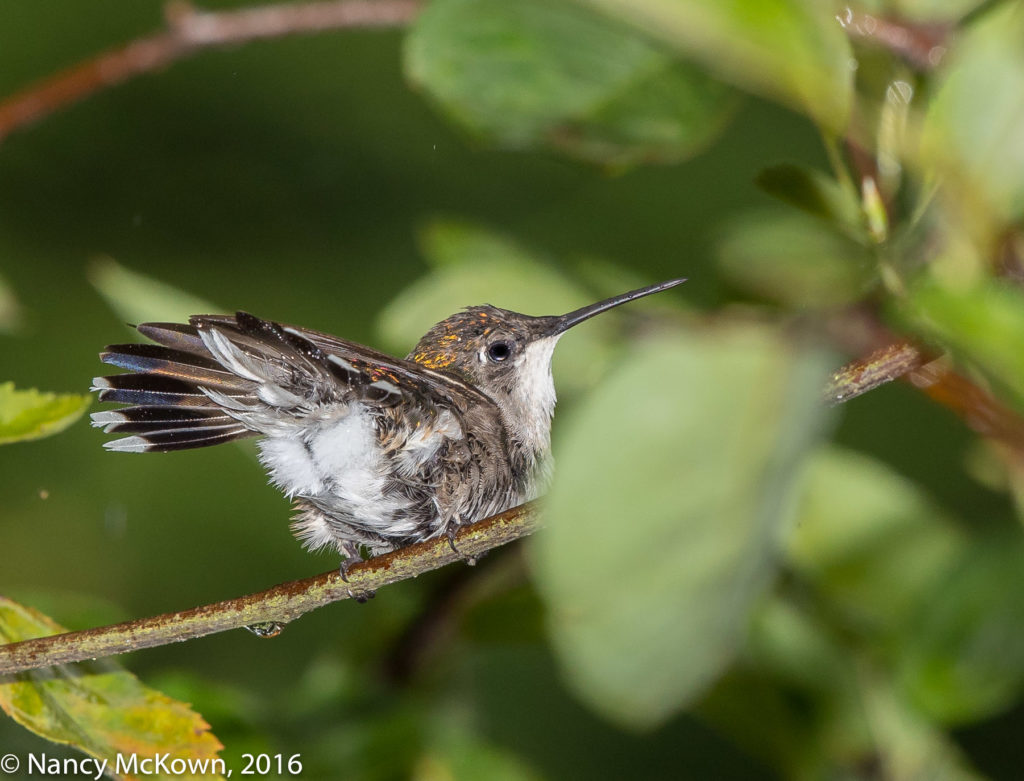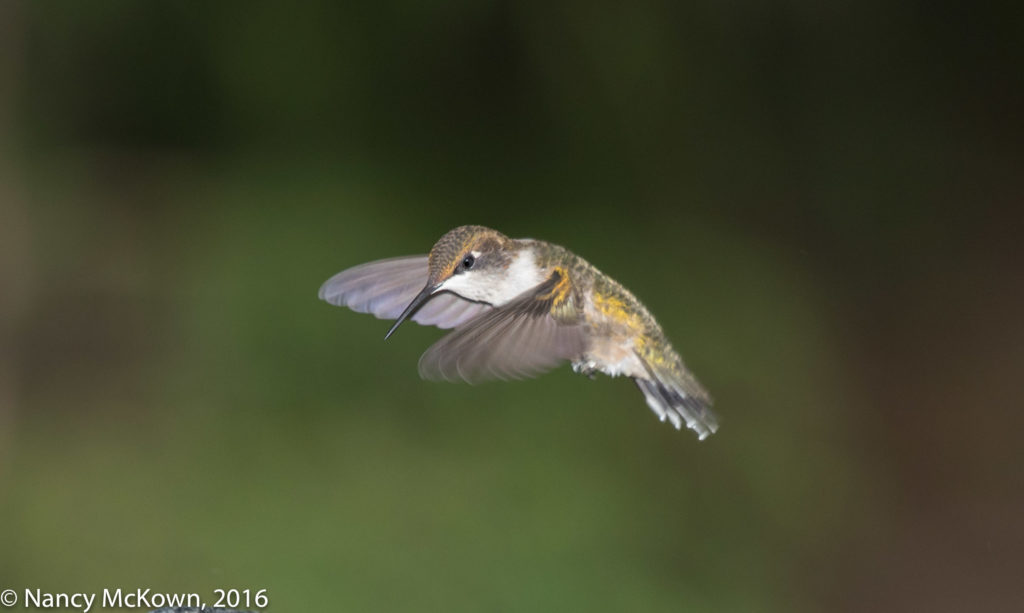Photographing the Ruby Throated Hummingbird
Ruby Throated Hummingbirds are plentiful in our yard and feed on a wide variety of small insects, spiders, sap and nectar. They linger into early October before commencing on their migration journeys. During Spring and Summer, these tiny birds are commonly seen on and around feeders making them relatively easy to photograph.
Guarding Food Sources
Every time I photograph birds in our yard, I always notice one or two aggressive Ruby Throated Hummingbirds acting like bullies around a hummingbird feeder. This behavior can be described as territorial and takes the form of menacing, purposeful, greedy dive bombing of other hummers who attempt to drink from the same hummingbird feeder.

An Aggressive Pose.
ISO400; f/9; 1/250 Second
On this particular shoot, an aggressive female unconcerned with me established herself on a camera level perch very close to the feeder. She spent the whole morning standing guard, watching, waiting, only occasionally coming to the feeder for a quick drink. I also managed to photograph another female hummer (see photo below). She crouched down in the wet foliage to hide and watched for an opportunity to sidle past the sentry and sneak in for a drink at the feeder.

This non aggressive Individual
is Watching and Waiting for her
chance at the Feeder.
ISO400; f/9; 1/250 Second
Some (Anthropomorphic) Observations of Aggressive Hummer Behavior
- The aggressive Hummer (either male or female) will defend food resources relentlessly, so much so that I wonder when they find the time to get enough nourishment for themselves.
- They are not afraid to insistently confront humans when their feeders run dry.
- They choose a “watchtower” perch near the feeder that provides the best vantage point from which to watch for trespassers.
- They create a “no fly zone” into which all other hummers are considered trespassers. If another hummer gets too close, they initiate an attack.
- This aggressive behavior includes: loud chittering, tail and wing displays, dive bombing, pursuing the interloper until he is out of the designated territory, aggressive ramming using their chests, sharp beaks, and claws.
- These individuals guard their food source all summer, right up to the time they leave on migration.
- Solutions to this behavior include clustering multiple nectar feeders in one area or widely separating them….. making them impossible for one individual to police.

ISO400; f/9; 1/250 Second
There were plenty of opportunities to photograph the hummers on the feeder, but where’s the challenge in that? I wanted to capture some hummer flight action– but for the most part, the dizzying speed and agility of these little birds left my tracking abilities in the dust. I did manage to capture the aggressor hovering over the feeder in between dashes to and from her watchtower perch.
Hoping for a Vagrant Hummer to Visit
As I sit and watch the birds, I keep hoping I will see and photograph an uncommonly seen species of hummer as she passes through our yard in the Fall or Spring. The most likely species for Southwest Michigan would probably be the Rufous Hummer. More rare and accidental spottings have been documented in Michigan of the more elusive Broad-billed Hummingbirds, the Green Violet-ear Hummingbirds, and the White-Eared hummingbirds.
It could happen.









such fascinating little birds!